What is the Best Way To Make Yogurt? Cold Start or Traditional?
Sneak Preview: Wondering what is the best way to make yogurt? This guide will explain the advantages and disadvantages of these two methods.
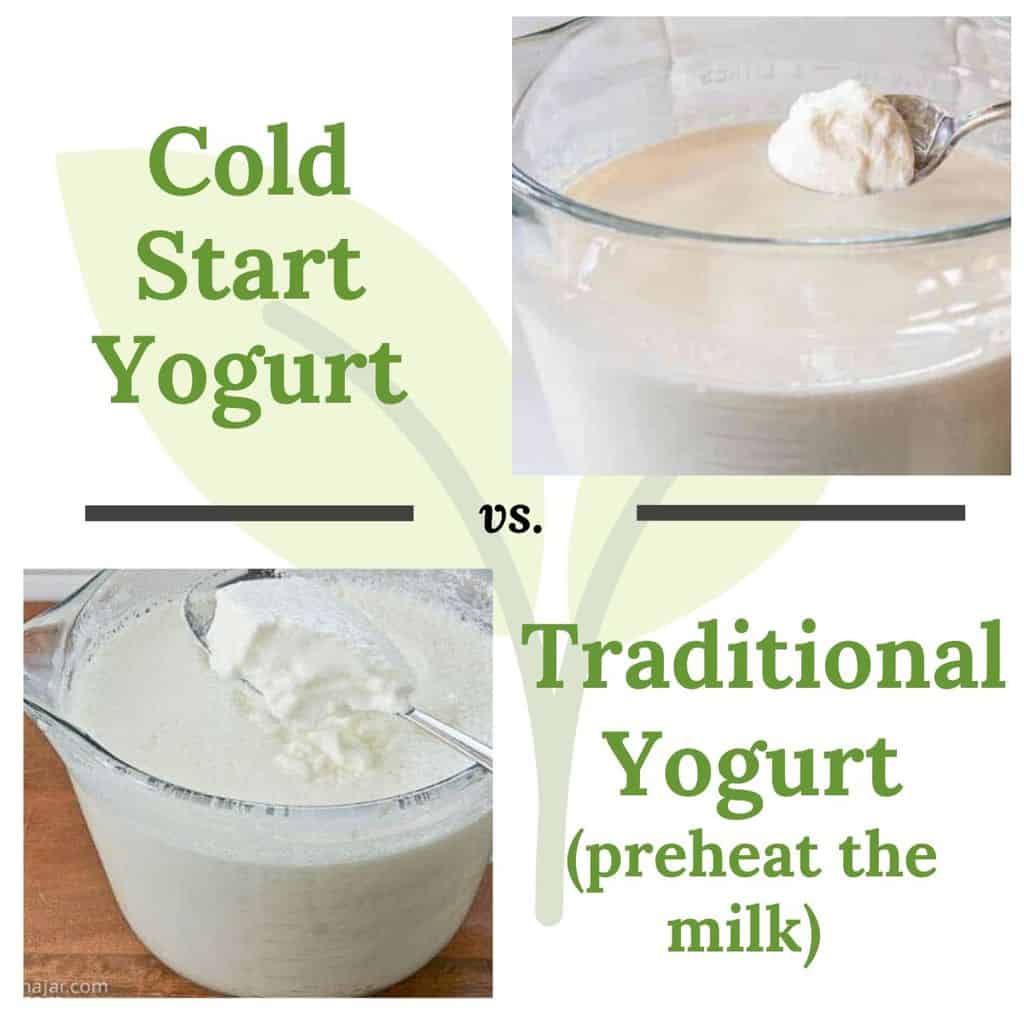
As an Amazon Associate, I earn from qualifying purchases.
Do you know the difference between the traditional way of making yogurt and cold start yogurt?
In a nutshell, the traditional method involves heating milk to a high temperature and then letting it cool before adding a starter. The cold start method allows you to skip the heating process and go straight to incubating yogurt.
I have researched, tested, and compared both processes to discover each method’s possibilities, drawbacks, and advantages. Now you can decide which method suits your style and taste. At the very least, you may learn a new way to make yogurt.
If you read to the end of this post, you’ll have all the facts you need to decide the best method for you.
Excellent post. I got here today when researching the cold start method of making yogurt after recently watching how to make homemade yogurt on a YouTube channel.
—Kurt
Note: This post addresses yogurt made from dairy products. Making yogurt with nut or grain milk is a different game and a topic for another day.
What Is the Main Difference Between the Two Methods?
The traditional method involves heating regular milk to 180˚F to make more protein available for making yogurt. The cold start method uses milk filtered at the factory to make it higher in protein straight off the shelf. Heating the milk to 180˚F is not necessary.
Now that we’ve got that out of the way, let’s get practical.
What Ingredients Are Required?
Milk
Traditional Method:
You can make yogurt traditionally with almost any form of dairy milk. This would include dry milk, non-fat, 2%, whole, half-and-half, heavy cream, raw, pasteurized, ultra-pasteurized, organic, non-organic, and ultra-filtered.
Cold Start Method:
The cold start method requires ultra-filtered milk. You can use low-fat, whole, and even chocolate.
In the name of doing thorough investigative work, I tried making yogurt with chocolate ultra-filtered milk. The result was yogurt with a somewhat softer texture than yogurt with unflavored milk. My grandkids loved it with Redi-Whip on top.
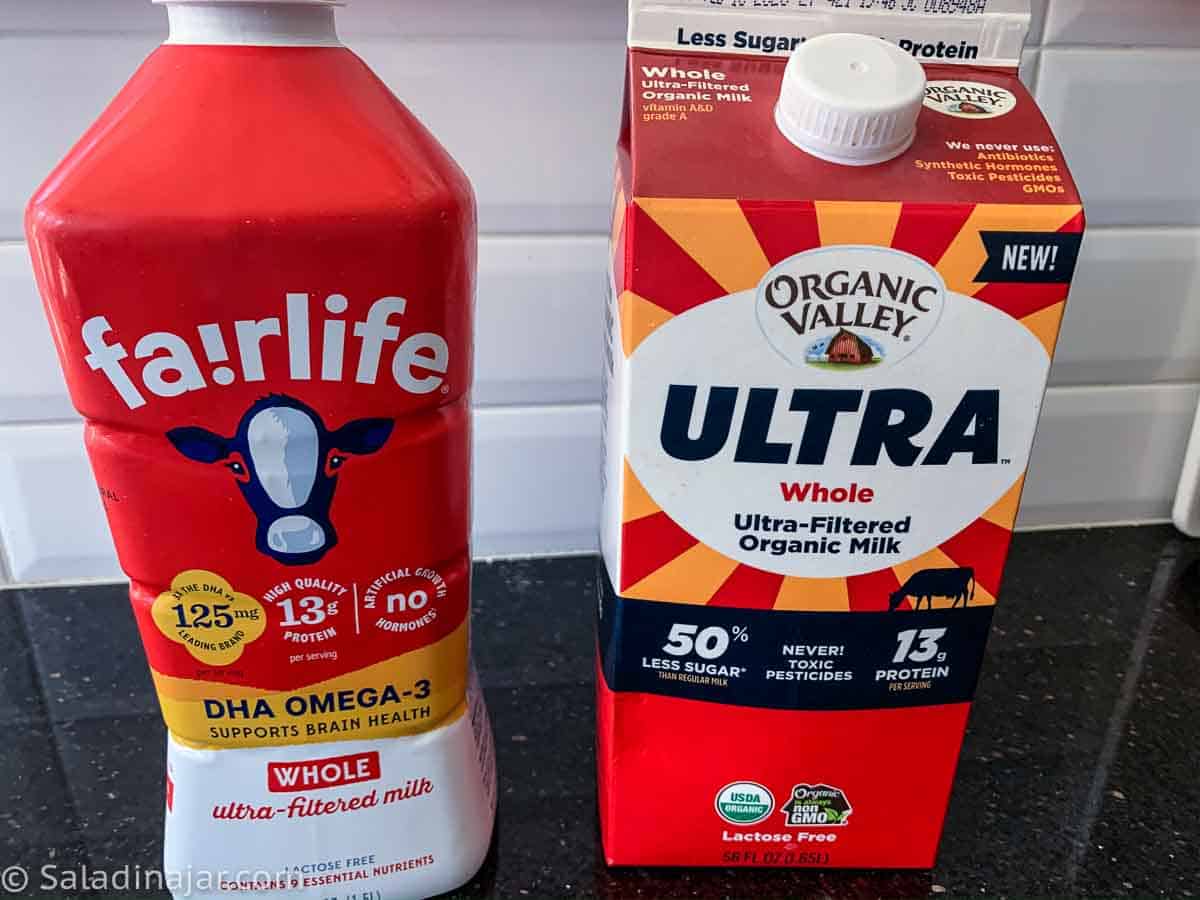
Heads up!
The more commonly available ultra-pasteurized milk is not the same as ultrafiltered milk.
What is the difference between ultra-filtered (aka diafiltered) milk and ultra-pasteurized milk?
Ultra-filtered milk has been “gently filtered, reducing sugars, boosting the protein and calcium and making it perfect for the lactose-intolerant.
If the label says “ultra-pasteurized,” don’t assume the milk is ultra-filtered. This is an important distinction. Check the label.
In many cases, ultra-filtered milk is also ultra-pasteurized. But not always.
The Fairlife brand I see most often in my area is labeled ultra-filtered. It’s also ultra-pasteurized, even though it’s not labeled as such.
“Fairlife milk is “ultra-pasteurized” which means it is thermally processed at regulated temperatures and durations so as to produce a product which has an extended shelf-life under refrigerated conditions.”
Irie from the Consumer Support Center at Fairlife
Organic Valley Ultra Whole milk is labeled as ultra-filtered. Again there is no indication this product is ultra-pasteurized. Their website says it is pasteurized but makes no mention of being ultra-pasteurized. Judging by the small freshness window listed on the carton, it is most likely not ultra-pasteurized.
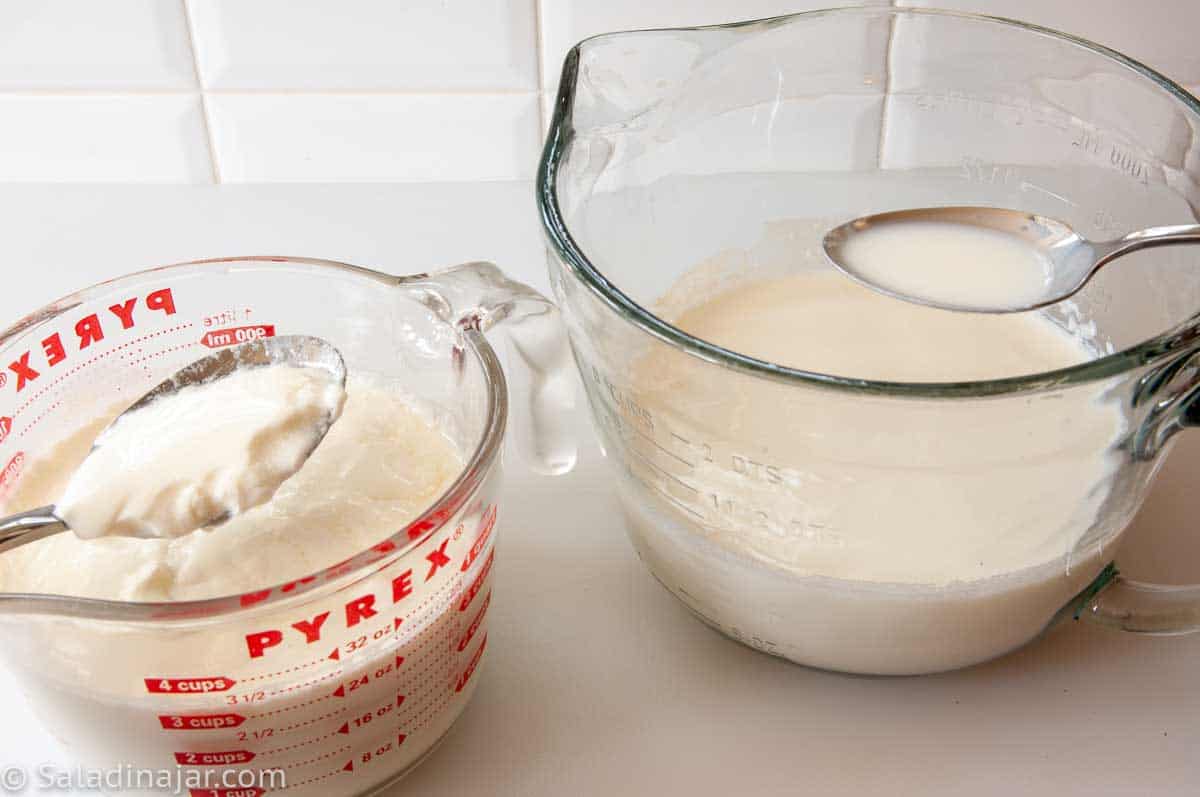
Starter
The starter is the same for either method.
Most people use freeze-dried cultures, yogurt sold at the grocery store, or homemade yogurt as a “starter.”
The “starter” must contain live cultures and no other thickeners. Unflavored yogurt would be my first choice. Vanilla yogurt with some sugar is acceptable.
Which Method Is Quicker?
Heating the milk before incubation is not required with the cold start method. This is the distinguishing factor. Add the “starter” to cold milk and start the incubation process immediately. THIS IS A HUGE TIME-SAVER!
On the flip side, the traditional method for making yogurt calls for heating the milk to 175-180˚ F first. Heating the milk rearranges the proteins, enabling milk to become (thicker) yogurt.
What goes up must come down.
I’m referring to the time it takes for the heated milk to cool back down to a safe temperature for the yogurt “starter.” With the traditional method, you must allow the milk to cool down. (You can hasten the process by setting the milk in an ice bath.) You get to skip this step with Cold Start.
The distinguishing characteristic of the cold start method is that the milk is not heated and cooled before incubation.
For example:
Two quarts of milk take me 16-18 minutes to heat in a microwave. (You can also heat your milk on the stove or in your Instant Pot, but it will need more time.) Add another 45 minutes to 1 hour to cool the milk back down.
Save this hour and a half by using the cold-start method. My hands-on time is only about 5 minutes in the heat-up-cool-down process when I use a microwave. Heating on the stove requires babysitting, so a longer hands-on time exists.
Summary: The cold start method is quicker and less trouble than the traditional method.
Which Method Is Cheaper?
A liter of ultra-filtered milk will cost more than run-of-the-mill store-brand milk. Organic ultra-filtered milk costs around $6 for a half-gallon in my area. Fairway ultra-filtered milk costs $4-6 plus a liter at my local Walmart.
Compare that with the $3-5 price tag for a gallon (equal to 3.8 liters) of regular milk (often on sale).
Summary: The cold start method costs at least twice as much or more than the traditional method.
Is the Equipment Different for Each Method?
The equipment needed is the same for both methods: a container(s) to hold the milk and a way to incubate that container.
The Instant Pot provides both the container and the incubator for either method. It’s certainly convenient.
But not for everybody…
It may be impractical for people who make more than 6 quarts (or whatever the size of your Instant Pot) of yogurt at a time. I don’t use the Instant Pot much because then what would I use for cooking dinner?!
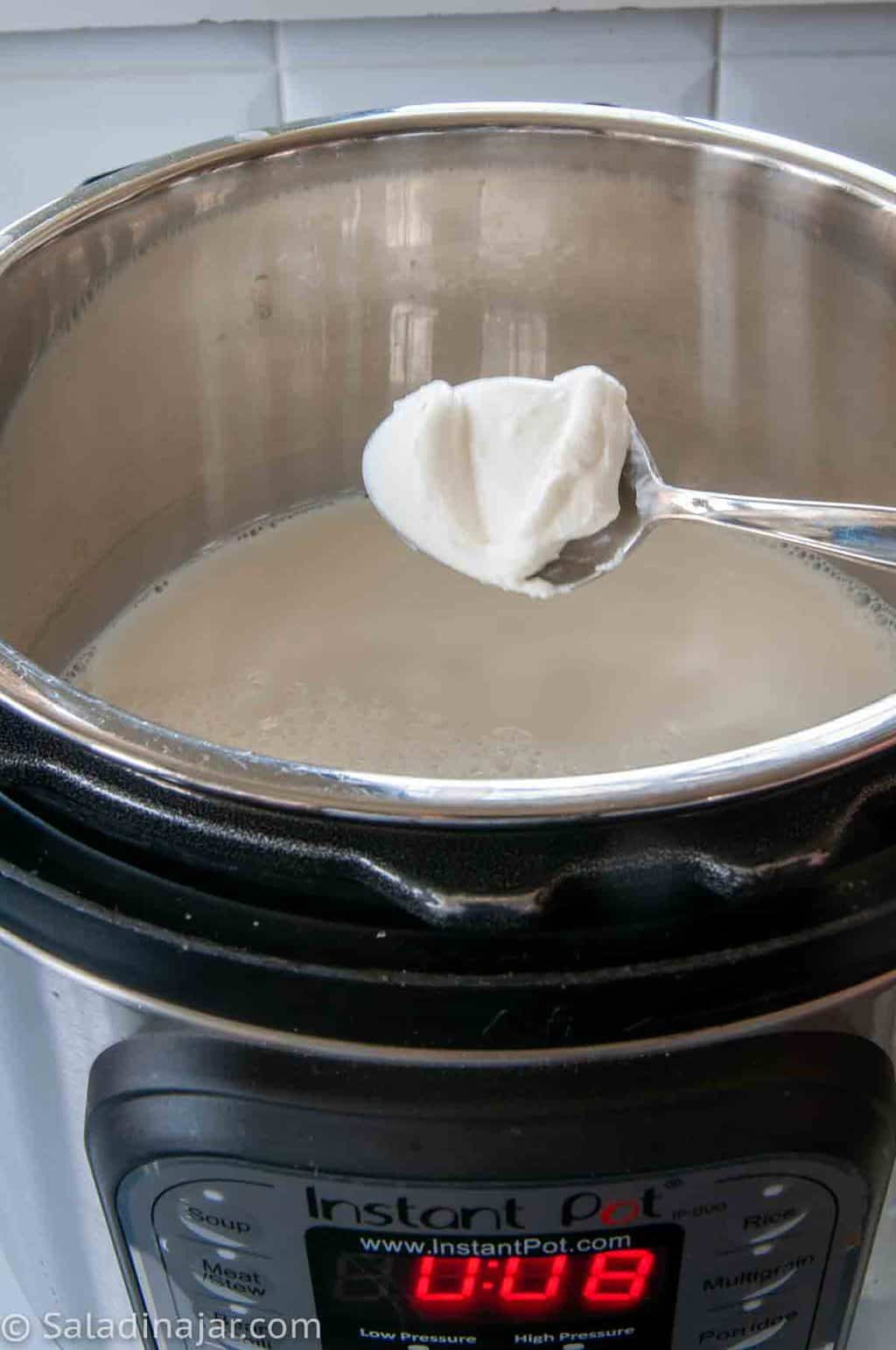
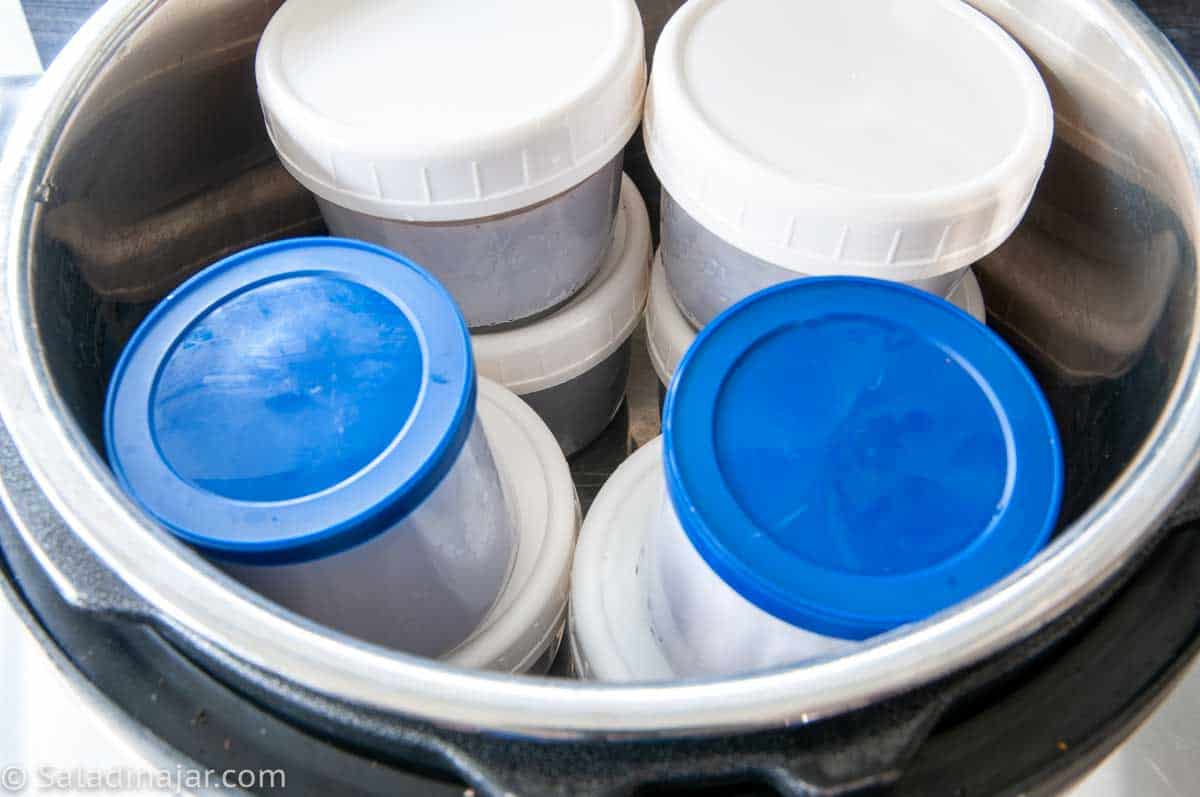
Yogurt-making machines
They can be limiting but useful for beginners, like using free or inexpensive software. They are easy to learn and provide quick success for newbies.
But once you get some experience, it’s hard to branch out. For example, they are impractical if you want to make Greek Yogurt or large amounts.
No Instant Pot or machine?
Use a glass Pyrex pitcher or bowl, a heat-resistant ceramic bowl, or a metal pan to hold your milk. Next, you need a warm place to incubate your yogurt to hold the temperature between 100-105˚F. Are you looking for ways to incubate your yogurt without an Instant Pot or yogurt machine? See this post for more than 6 incubation hacks.
Summary: You can make yogurt without an Instant Pot or a yogurt machine.
Which Method Produces the Thickest Yogurt Without Additives?
Both. Either. It all depends.
Many variables impact thickness. They include the length and temperature of incubation. Also, the amount of fat in your milk. Add to that the type and freshness of your “starter.” It’s pretty much impossible to answer this question accurately.
Note: You can add dried milk solids, gelatin, rennet, etc., to make thicker yogurt without heating your milk. For this post, I’m talking about using 100% dairy milk with no additives.
Straining Yogurt Is Always an Option
You can strain yogurt made with either method for a thicker yogurt. The longer you strain, the thicker the yogurt.
Do you prefer Greek or Icelandic yogurt? Here are several straining methods: Using a Yogurt Pouch, A Cheap Way To Strain Yogurt Without Cheesecloth, How To Strain Yogurt the Easy Way.
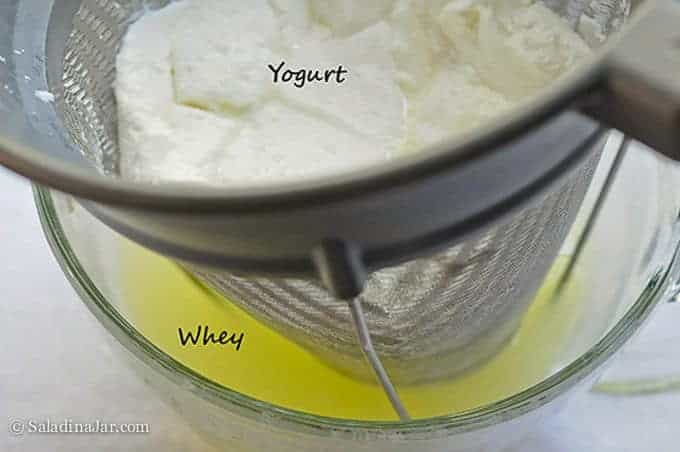
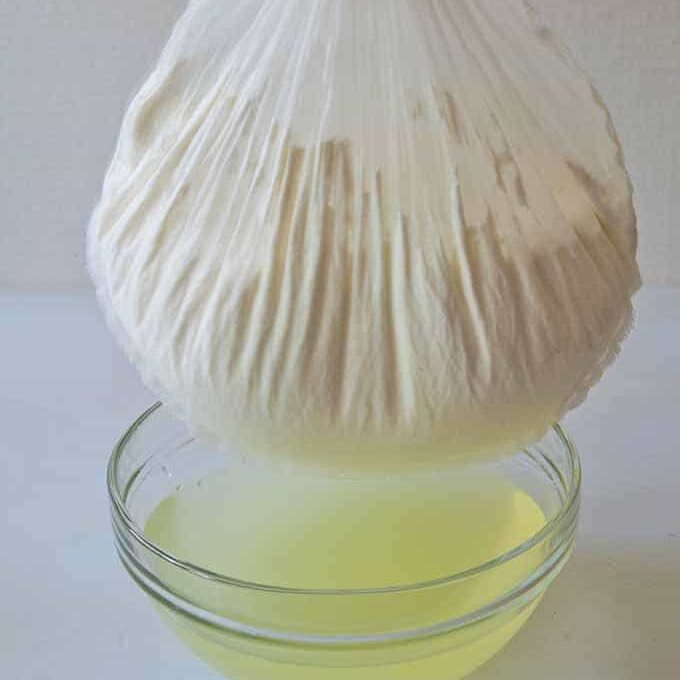
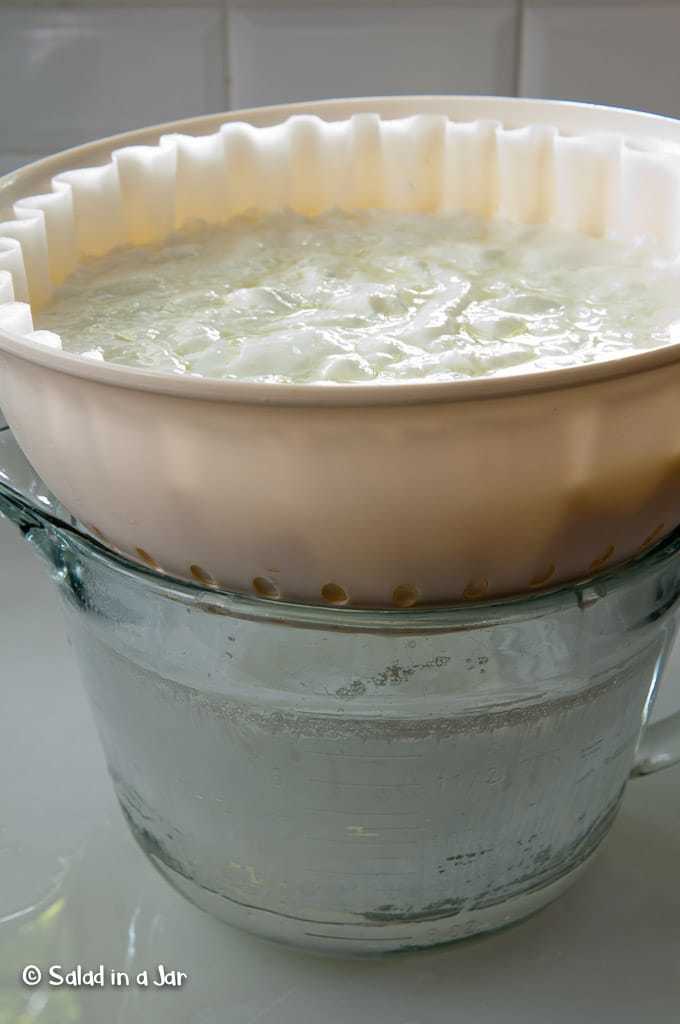
How To Strain Yogurt Faster
A reader suggested using a salad spinner to strain whey faster. I tried it. It works…as long as you aren’t doing more than 1 liter or 1 quart at a time.
Pour your yogurt into a yogurt pouch or nut bag. Pull it tight at the top. Set the bag inside your salad spinner. Put the lid on and spin away.
How Are the Taste and Texture of the Yogurt Different From Each Method?
Your yogurt’s taste has more to do with the milk and “starter” you use. If you don’t care for the taste of the milk, don’t expect to like the yogurt it makes. Not everybody likes the taste of ultra-filtered milk. Drink a cup first.
If you like tart yogurt, be aware that the longer your milk ferments, the sourer your yogurt will be, regardless of your chosen method.
Yogurt texture is another issue with many variables. It can be affected by the amount of starter you use, the length of incubation, the temperature of incubation, how long you strain it, and the fat content of the milk. Again, your chosen method won’t have much effect, in my experience.
Summary: In my experience, your chosen method is not as important as the other variables discussed above regarding taste and texture.
Which Method Is Better for Avoiding Milk Skin?
One topic rarely talked about among yogurt makers is the skin that forms whenever hot milk cools. It’s called milk-skin or lactoderm.
Even if you’ve never made yogurt, you know about milk-skin. Have you ever made a cup of hot chocolate and got too busy to drink it? The skin that forms across the top is what I’m talking about.
When using the traditional method to make yogurt, removing all the skin from the milk as it cools is difficult. I’ve tried many ways to prevent the skin from forming in the first place. The best way is to stir frequently while the milk is heating and cooling.
“The easiest way to prevent a skin from forming is to stir the milk as it heats and then to continue stirring occasionally as it cools. This breaks up the protein clumps and makes sure the temperature of the milk stays even throughout.”
Food Science: Why Skin Forms on Milk | Kitchn
I’m too impatient to hang around and stir.
I have tried covering the yogurt to equalize the temperature, but it takes longer to cool down. However, I don’t like the occasional milk skin bits I find in my yogurt.
Adding granola or fruit is an effective camouflage if you tend to leave bits of skin behind. (It can be difficult to get it all.) However, even the bits can be whipped into complete smoothness with a whisk.
Summary: If you don’t want to mess with removing the skin, avoid the issue and choose the cold-start method. Since you don’t heat the milk, skin doesn’t form.
Conclusion
Spoonable yogurt is possible with both methods. Other variables play an important role in the final product’s texture, taste, and thickness. Straining after incubation will make any yogurt thicker without using additives.
The cold start method is more convenient, quicker, and more expensive than the traditional method.
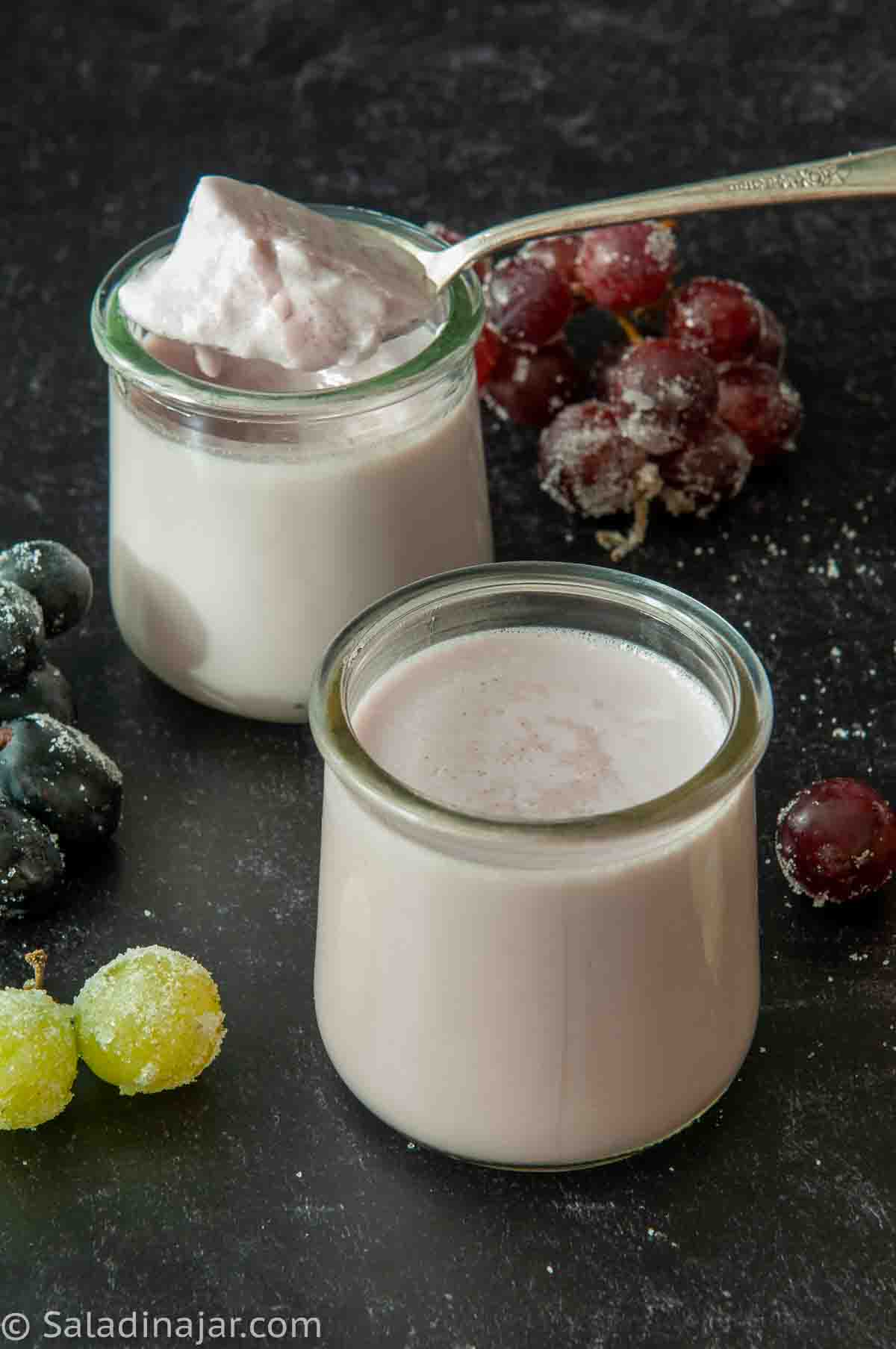
What Is the Final Answer?
Do you have more time than money? Do you go through a lot of yogurt at your house? You might want to stick with the traditional method.
If convenience is your priority and you like the taste of ultra-filtered milk, try the cold start method.
The cold start method is simpler if you’re new to making yogurt. After you have a few successes under your belt, try the traditional method.
If you’ve never made yogurt, check out Five Things you Should Not Do When Making Yogurt.
If you have questions or suggestions, email me privately for a quick answer: Paula at saladinajar.com. Hope to see you again soon!


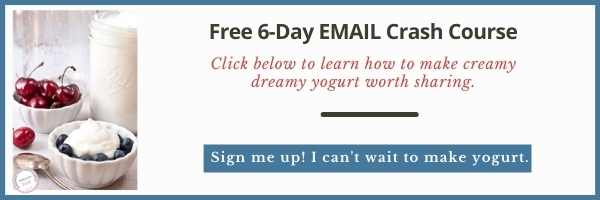
Paula Rhodes, owner
As a retired home economist, I created Saladinajar.com to share my belief that you don’t have to be a chef to find joy in creating homemade food worth sharing. Bread machines (used in an unconventional way), homemade yogurt, and quick microwave recipes are my specialty.